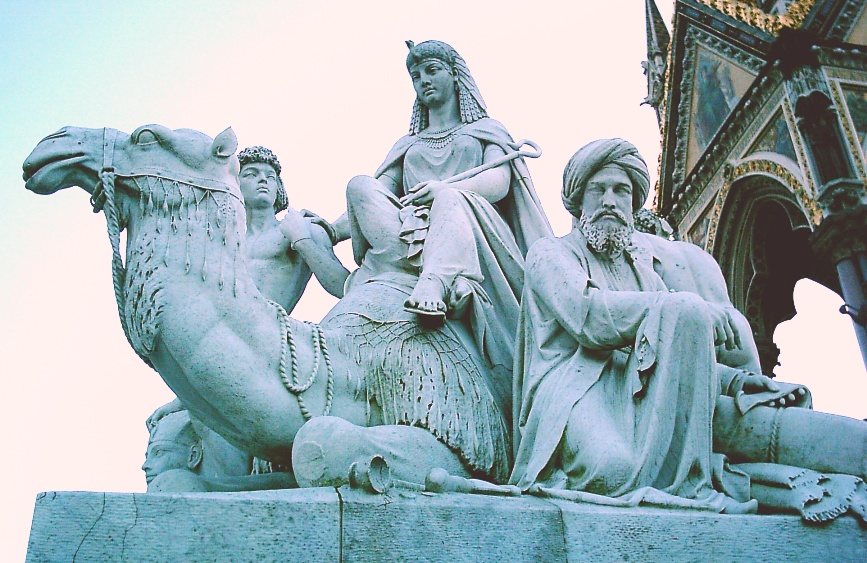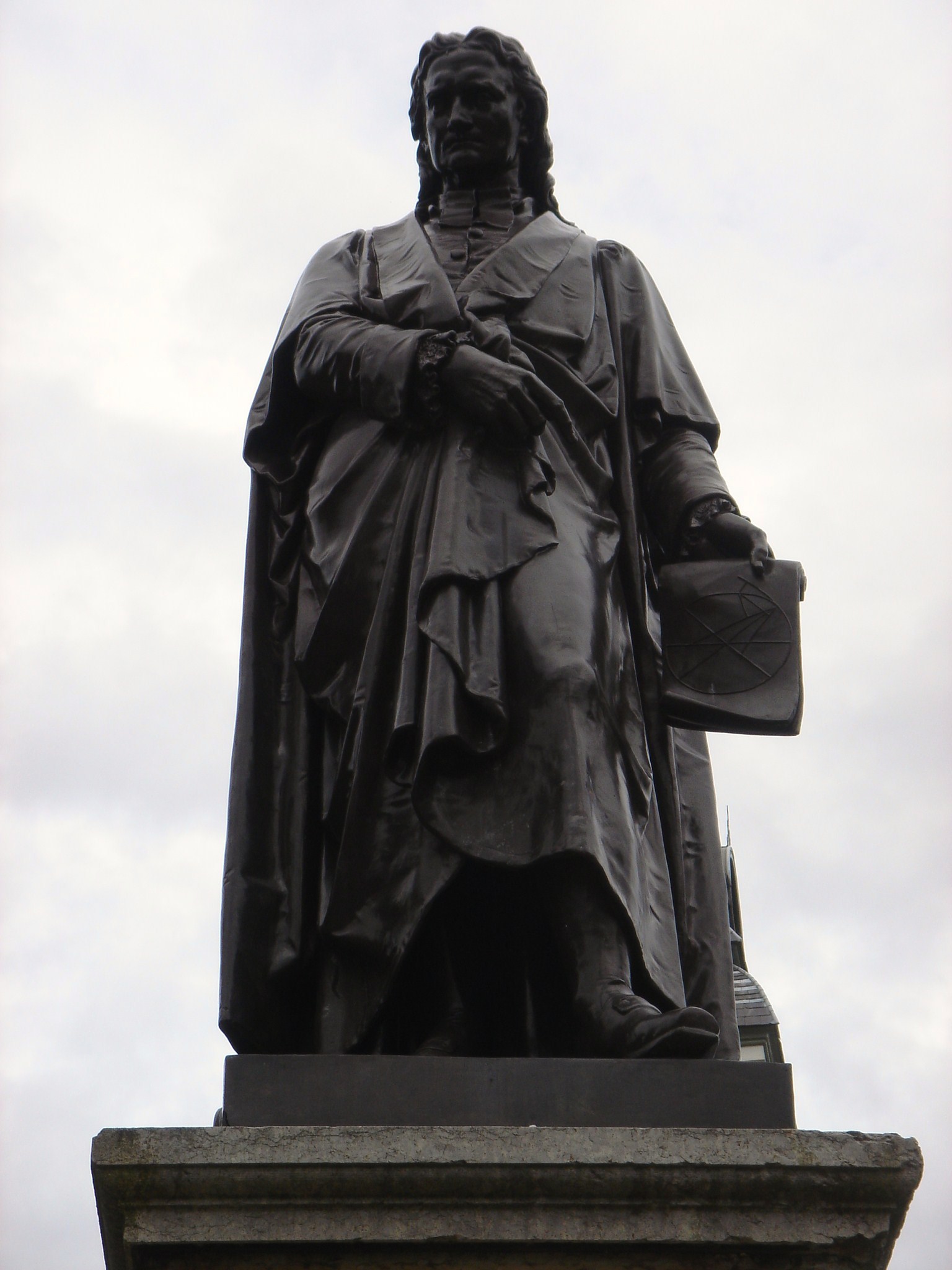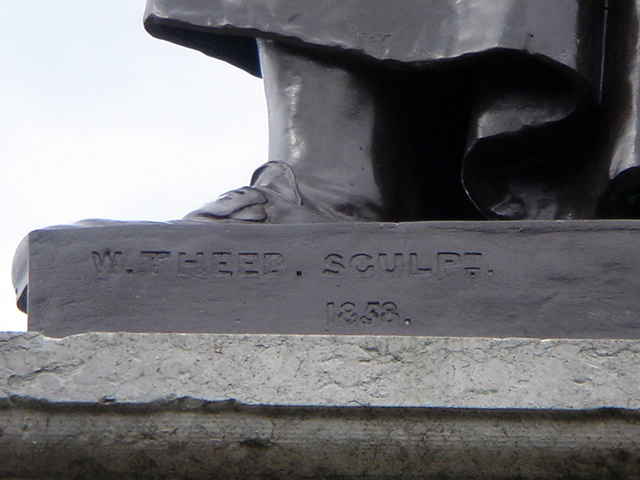William Theed on:
[Wikipedia]
[Google]
[Amazon]
 William Theed (1804 – 9 September 1891), also known as William Theed the younger, was a British sculptor, the son of the sculptor and painter William Theed the elder (1764–1817). He specialised in portraiture, and his services were extensively used by the
William Theed (1804 – 9 September 1891), also known as William Theed the younger, was a British sculptor, the son of the sculptor and painter William Theed the elder (1764–1817). He specialised in portraiture, and his services were extensively used by the

 Theed returned to London in 1848 and soon established a highly successful professional practice. He is known to have married, assumed to be around this time, a woman called Mary and had a son Edward, both listed in the 1881 census. In 1851 he displayed three pieces at the
Theed returned to London in 1848 and soon established a highly successful professional practice. He is known to have married, assumed to be around this time, a woman called Mary and had a son Edward, both listed in the 1881 census. In 1851 he displayed three pieces at the
1822 Royal Academy Schools Silver Medal
1822 Society of Arts Silver Isis Medal
Images of sculptures by William Theed Images of 25, busts and other sculptures by William Theed in Royal Collection
{{DEFAULTSORT:Theed, William 1804 births 1891 deaths 19th-century English sculptors 19th-century English male artists Alumni of the Royal Academy Schools Artists from Staffordshire English male sculptors People from Trentham, Staffordshire
Royal Family
A royal family is the immediate family of monarchs and sometimes their extended family.
The term imperial family appropriately describes the family of an emperor or empress, and the term papal family describes the family of a pope, while th ...
.
Career
Theed was born in Trentham, Staffordshire. Initially trained by his father, Theed the younger worked for several years in the studio of EH Baily the sculptor, and on 15 January 1820 was admitted to theRoyal Academy Schools
The Royal Academy of Arts (RA) is an art institution based in Burlington House in Piccadilly London, England. Founded in 1768, it has a unique position as an independent, privately funded institution led by eminent artists and architects. Its ...
. In 1826 he went to Rome.
In Rome, Theed is believed to have studied under the Danish sculptor Bertel Thorvaldsen and Italian Pietro Tenerani, as well as John Gibson and Richard James Wyatt. Here he worked in marble creating statues and busts, including those for the Duke of Lucca and the Prince and Princess of Capua. In 1844–5, after nearly 20 years in Rome, he received a commission from Prince Albert, then the prince consort, who had asked John Gibson (now a close friend of Theed) to send designs for statues to be placed in Osborne House. Two designs by Theed were accepted, ''Narcissus at the Fountain'' and ''Psyche Lamenting the Loss of Cupid'' both in marble.
Great Exhibition
The Great Exhibition of the Works of Industry of All Nations, also known as the Great Exhibition or the Crystal Palace Exhibition (in reference to the temporary structure in which it was held), was an international exhibition that took ...
, the most notable a marble of ''The Prodigal's Return'', a life-size piece, elaborately carved. From London he made further pieces for the prince consort, including a series of mythological reliefs for the reception rooms of Buckingham Palace
Buckingham Palace () is a royal official residence, residence in London, and the administrative headquarters of the monarch of the United Kingdom. Located in the City of Westminster, the palace is often at the centre of state occasions and r ...
. Another notable piece for the Royal Family was a series of twelve bas-reliefs illustrating scenes from Tudor history, this time in bronze, which were made for the Prince's chamber in the Palace of Westminster
The Palace of Westminster is the meeting place of the Parliament of the United Kingdom and is located in London, England. It is commonly called the Houses of Parliament after the House of Commons and the House of Lords, the two legislative ch ...
.
Portrait sculpture
The major aspect of Theed's production, however, was portraiture, with which he received commissions for major commemorative statues. Most notably are: *Sir Isaac Newton
Sir Isaac Newton () was an English polymath active as a mathematician, physicist, astronomer, alchemist, theologian, and author. Newton was a key figure in the Scientific Revolution and the Enlightenment that followed. His book (''Mathe ...
, a bronze (1858) which is at St Peter's Hill in Grantham (in front of Grantham Guildhall
Grantham Guildhall is a municipal building on St Peter's Hill, Grantham, Lincolnshire, England. It is a Grade II listed building.
History
The building was commissioned to replace the aging guildhall and jail on the corner of Guildhall Street a ...
)
* Henry Hallam, a marble (1862) in St Paul's Cathedral
* Sir Herbert Benjamin Edwardes, a marble (1868) in Westminster Abbey
*John Dalton
John Dalton (; 5 or 6 September 1766 – 27 July 1844) was an English chemist, physicist and meteorologist. He introduced the atomic theory into chemistry. He also researched Color blindness, colour blindness; as a result, the umbrella term ...
, a bronze (1855) outside Manchester Metropolitan University
For the Royal Family, he produced busts of:
* Victoria Mary Louise, Duchess of Kent, in marble (1861)
* Prince Albert in marble (1862)
*Queen Victoria
Victoria (Alexandrina Victoria; 24 May 1819 – 22 January 1901) was Queen of the United Kingdom of Great Britain and Ireland from 20 June 1837 until Death and state funeral of Queen Victoria, her death in January 1901. Her reign of 63 year ...
, bronze (1864)
Having been appointed by Queen Victoria
Victoria (Alexandrina Victoria; 24 May 1819 – 22 January 1901) was Queen of the United Kingdom of Great Britain and Ireland from 20 June 1837 until Death and state funeral of Queen Victoria, her death in January 1901. Her reign of 63 year ...
to take the death mask of the prince in 1861, he went on to produce several notable memorial statues including those at Balmoral Castle.
* Statue of Albert, Prince Consort, Balmoral Castle (1867)
Double portrait, Queen Victoria and Prince Albert
He also executed a sculpture of Queen Victoria and Prince Albert, of which a copy is in theNational Portrait Gallery, London
The National Portrait Gallery (NPG) is an art gallery in London that houses a collection of portraits of historically important and famous British people. When it opened in 1856, it was arguably the first national public gallery in the world th ...
while the original is retained in the Royal Collection at the Royal Mausoleum, Frogmore
The Royal Mausoleum is a mausoleum for Queen Victoria
Victoria (Alexandrina Victoria; 24 May 1819 – 22 January 1901) was Queen of the United Kingdom of Great Britain and Ireland from 20 June 1837 until Death and state funeral of Queen ...
.
The descriptive label beside the copy in the National Portrait Gallery reads:
:"Queen Victoria and Prince Albert in Anglo-Saxon dress
Anglo-Saxon dress refers to the clothing and accessories worn by the Anglo-Saxons from the middle of the fifth century to the eleventh century. Archaeological finds in Anglo-Saxon cemeteries have provided the best source of information on Anglo- ...
. Apparently prompted by a suggestion of Victoria, the Crown Princess of Prussia" ( Victoria, Princess Royal
Victoria, Princess Royal (Victoria Adelaide Mary Louisa; 21 November 1840 – 5 August 1901) was German Empress and Queen of Prussia as the wife of Frederick III, German Emperor. She was the eldest child of Queen Victoria of the United Kingdom ...
) "this sculpture is thought to symbolise the ties between the German and English peoples from Anglo-Saxon times to the marriage of the Royal couple. By William Theed (1804-91). Plaster cast from the marble executed 1863-7. Lent by H.M. The Queen."
On the plinth of Theed's original in the Royal Collection is a single line (without attribution) from the poem ' The Deserted Village' by Oliver Goldsmith
Oliver Goldsmith (10 November 1728 – 4 April 1774) was an Anglo-Irish people, Anglo-Irish poet, novelist, playwright, and hack writer. A prolific author of various literature, he is regarded among the most versatile writers of the Georgian e ...
(l.170): "''...Thus to relieve the wretched was his pride, / And e'en his failings lean'd to Virtue's side; / But in his duty prompt at every call, / He watch'd and wept, he pray'd and felt, for all. / And, as a bird each fond endearment tries / To tempt its new-fledg'd offspring to the skies, / He tried each art, reprov'd each dull delay, / ALLURED TO BRIGHTER WORLDS, AND LED THE WAY.''"(caps. added, as in the inscription)
Martin Greenwood's biographical article mentions that this sculpture, which had been completed for the Queen, is also known as 'The Parting'.
Death
Theed had shown more than eighty works at the Royal Academy between 1824 and 1885, and from the 1840s had enjoyed the extensive patronage of the English royal family. He died of old age on 9 September 1891, at his home, Campden Lodge, Campden Hill, Kensington, London, with a wealth of £40,751.Awards
1820 Society of Arts Silver Palette - for a figure ofHercules
Hercules (, ) is the Roman equivalent of the Greek divine hero Heracles, son of Jupiter and the mortal Alcmena. In classical mythology, Hercules is famous for his strength and for his numerous far-ranging adventures.
The Romans adapted the Gr ...
1822 Royal Academy Schools Silver Medal
1822 Society of Arts Silver Isis Medal
References
Bibliography
*.External links
*Images of sculptures by William Theed
{{DEFAULTSORT:Theed, William 1804 births 1891 deaths 19th-century English sculptors 19th-century English male artists Alumni of the Royal Academy Schools Artists from Staffordshire English male sculptors People from Trentham, Staffordshire